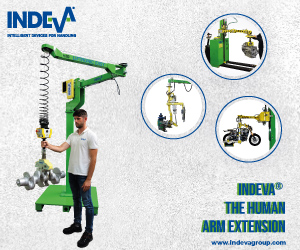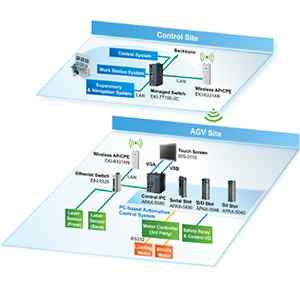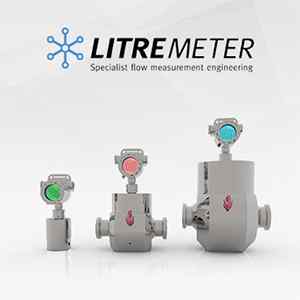Articles
Top 10 Practices of Robotic Process Automation Companies

Definition
Robotic Process Automation (RPA) is a significant component of the ‘Future of Work’ toolkit. Process automation helps to add value to work, business, and enterprises. Robotic process automation can be defined as any capability (software and services) that allows transacting in any IT application or website. This can be done typically in the same way a human world, to automate complex, rule-based work. Process automation or Robotic process automation companies have become an integral component of digital transformation strategies for enterprises across the globe. Moreover, RPA is the technology of choice to streamline business operations and reduce costs.
RPA is software based and can be used to perform various tasks including maintenance of records, queries, calculations, and transactions. Any application used by your company can be operated by RPA. Robotic process automation companies can support technologies such as HTML, .NET, Citrix, and Java.
Introduction
Top robotic process automation process becomes an increasingly disruptive force within the global economy. But how do you judge whether your RPA initiative is successful? Of course, it is not just whether the first ‘go live’ instance does well.
Robotic process automation is all about building momentum with strategically selected RPA projects so that you can continuously automate more and more complex business processes. By following the top robotic process automation practices/procedures, you can achieve a sustainable and ever increasing ROI. Process automation is creating waves in the field of outsourced finance & accounting operations. Process automation companies uses the utilization of technology to automate processes, enhance their quality and remove all the avoidable and repetitive processes involved in delivering the final result. We can restructure the way humans and machines live and interact using top robotic process automation practices and to create a better, stronger digital economy.
Benefits of RPA
Robotic process automation companies or RPA help you to revolutionize your business and unlock vale by providing:
Best Quality Services: RPA helps to gain better customer service and better accuracy
Enhanced Agility: Reduced overhead and more flexible business resources.
Increased speed: At exceptional speed, processes can be completed.
Comprehensive Insights: Maximized efficiency by digitizing and auditing process data
Employee Experience: Increased staff productivity and reduced attrition
Following these top 10 robotic process automation companies practices help you to comprehend the kind of success.
1. Choosing a principal RPA officer
2. Executive sponsor
3. Building the best business plan
4. Training employees, trainer, everybody
5. Carry out development tests
6. Accomplish consent and lucidity at the time of using RPA objectives
7. Calculate and re-calculate automation decisions and share learned lessons
8. Spread and celebrate RPA successes
9. Brainstorming new robotic solution designs
10. Monitoring the robots until stabilization
Choosing a principal RPA officer
Choosing a principal RPA officer will he helpful for your businesses. Many companies have created a new, senior position and appointed them to take responsibility for the enterprise-wide rollout of the technology. This RPA officer would act as the head of RPA for the company, and generally reports to the CEO or CIO.
Executive Sponsor
Robotic process automation (RPA) does not require replacing any existing systems. Tools are required to use without calling IT. Yet tools need to be involved to make sure automated processes integrate well with the current IT environment. You need a strategic and holistic vision of how RPA will transform the entire enterprise rather than a task or function. In order to overcome these challenges, you require an executive sponsor to help fight for budgets and resources as well as help manage ‘softer’ issues. Executive Sponsor must and should understand the full potential of RPA and try to revolutionize the organization.
Building the best business plan
Every organization is trying to get started with process automation just to check how it works. If it succeeds, then it will move onto the next procedure. The problem with beginning the RPA journey is that at some point in time, you bump against the problem of scale
You need to have a centralized vision and business plan that must come from an RPA center of excellence (COE) that has resources to assist the different business departments roll out RPA based on a master strategic plan.
Training employees, trainer, everybody
After making RPA into good path, it takes off like wildfire. You will get opportunities to use it to drive even greater efficiencies, productivity, and cost savings throughout the organization. It all begins by training the trainer. They have to be fully versed in what RPA can do, what tasks are good candidates for RPA, and how to continually enhance RPA deployments to automate processes of increasing complexity. They have to share their knowledge on others, employees, managers, anyone who has a stake in your RPA strategy.
Carry out development tests
This is one of the best practices in any project with a SDLC (systems Development Lifecycle) is to create various environments to develop and test applications and then put into production. You have to assure that only these bots that are ready for production go into production, keep your development, test, and protection environments at arm’s length from each other. Only after the testing team has been given the green light should the bot go into production. This is critical.
Accomplish consent and lucidity at the time of using RPA objectives
Accomplishing consent and lucidity at the time of using RPA objectives is very important to the success of any transformation initiative. This means you have some sort of objective framework for utilizing which business processes get automated, and in what order. Businesses are thinking to deploy RPA to present their cases on the business impact of the proposed automation that helps RPA leaders to use automations and schedule automation initiatives in a disciplined way.
Calculate and re-calculate automation decisions and share learned lessons
You have to continuously talk to your business users to make sure processes have been automated in the right way. You have two possible ways to deal with RPA. You can automate a good business process poorly (resulting in numerous errors), or you can competently automate a bad business process. Neither is good. Firstly, you have to assure that the underlying business process is apt and not holding the enterprise back because of residual inefficiencies from past legacy ways of doing things. The latter requires accurate error logging, and making sure that when there’s a problem the right people are notified and a fix is immediately put into place.
Spread and celebrate RPA successes
RPA can be sensitive successes and you have to make the case for it. One of your key objectives is to educate employees throughout the organization and explain to them what RPA can and cannot do. Employees and workers always worry that RPA will take their jobs away. So, be clear and demonstrate to employees and how RPA will be deployed, and highlight the advantages it offers to your human workers.
Brainstorming new robotic solution designs
Brainstorm the design of the new robotic designs so that there won’t be any limitations on the change in the overall business process. Apply roll-based access to all environments.
Monitoring the robots until stabilization
Allocate robotic process administrators to constantly monitor the robots until stabilization.
Conclusion
As robotic process automation companies or RPA moves into mainstream adoption, more companies will look for guidance on how to apply exciting technology. By following these top 10 robotic process automation companies practices will help you start on your RPA initiative.





